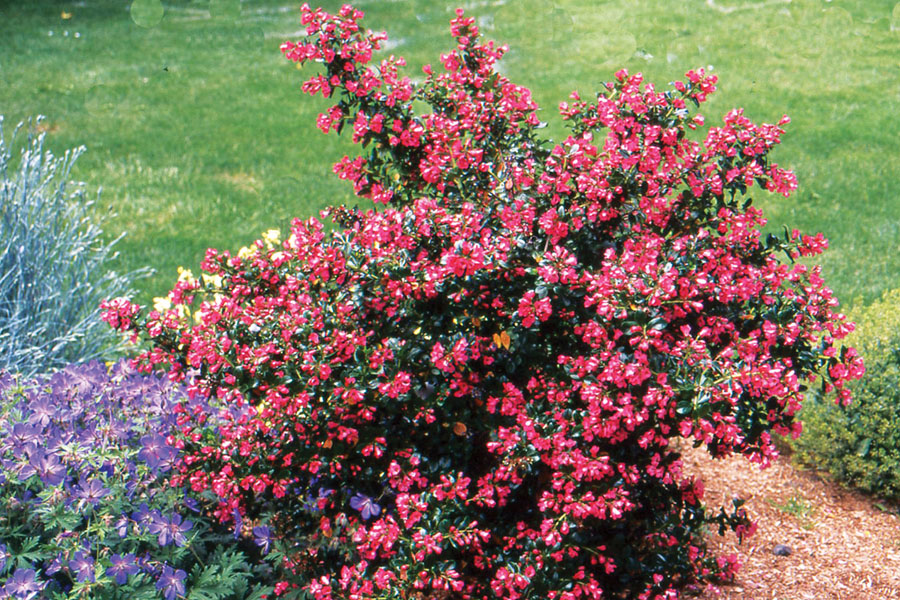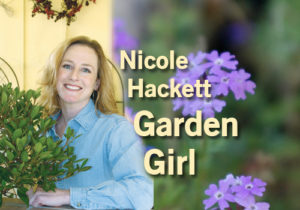Seize the season: Fall planting for a beautiful landscape

 CLAYTON, CA (Oct. 25, 2023) — The fall planting season is finally upon us. During the early days of fall, our soil is still warm, which is an excellent environment for plant and tree roots to begin to establish. If all goes well, the rains will follow shortly after installation. This is the time of year to install foundation shrubs and trees, rehab browning lawns, add to our perennial beds, install some native plants, plant winter veggies and spruce up tired container plantings. It’s a lot to do, but the reward of a beautiful landscape is worth it.
CLAYTON, CA (Oct. 25, 2023) — The fall planting season is finally upon us. During the early days of fall, our soil is still warm, which is an excellent environment for plant and tree roots to begin to establish. If all goes well, the rains will follow shortly after installation. This is the time of year to install foundation shrubs and trees, rehab browning lawns, add to our perennial beds, install some native plants, plant winter veggies and spruce up tired container plantings. It’s a lot to do, but the reward of a beautiful landscape is worth it.
Many have planned throughout the summer for what they’ll install come fall. Trees are the most popular fall installations. Folks seek Crape myrtle, Chinese Pistache, Japanese maples, Smoke trees and Fruitless Olive trees, all of which thrive in our environment.
Foundation shrubs are the bushes that define our landscapes. They support our homes, walkways, and fence lines. Dwarf nandina (interesting winter foliage), Abelia (variegated leaves of gold and green), Escallonia (dark green leaves and rosy, red spring flowers) and Euonymus (selection of bushes and groundcovers), are all sturdy, basic choices for our landscapes. They are proven to tolerate our clay soil, hot sun, and have low water needs. Leucadendron (fabulous foliage and colorful bracts throughout winter), Acacia Cousin Itt (dark green willowy evergreen shrub that grows exactly like the name implies), Grevillea (large group of evergreen plants with unique shaped flowers that hummingbirds can’t resist), are all interesting selections that will flourish in our Clayton Valley gardens.
Lawn care
Summer is so rough on our lawns. Even with the best care, summer browning can be an issue. Now is the time to get your lawn back in shape before winter. Get your turf aerated and dethatched. This makes the soil penetrable again. Spread a layer of high nitrogen soil conditioner throughout the grass to add nutrients naturally. Follow up with a dose of lawn food, and you’ll be on your way to a greener, happier lawn.
Our flowering beds and borders gave it their all this spring and summer. It is time to give back. Rake away the layer of mulch or bark and spread a couple inches of a premium compost beneath the drip line of your perennials. Work the new compost into the soil using a cultivator. Prune away spent flowers and pinch back browning leaves. While the bark is pulled back, it would be a good time to install some fall and winter blooming perennials. Osteospermum has daisy shaped flowers, a mounding, sprawling growth habit and comes in any color combination imaginable. Looking for dramatic leaves in your beds to offset your flowers, consider any of the amazing Heuchera. Craving body and foundation in a border, look at the azaleas. Azaleas are evergreen, they’ll bloom late winter through spring and their large flowers can be seen from a distance.
Now is also the time to add some native plants to your landscape. Manzanita, monkey flowers, Ribes, Verbena De La Mina, Ceanothus, Romneya coulteri, Salvia Bee’s Bliss, are just a few of the more commonly enjoyed natives for your Clayton Valley garden or landscape.
Eat your vegetables
This summer’s veggie beds were a huge success! Tomatoes, cucumbers, spaghetti squash gave us high yields. But as the ripening slows, it becomes time to remove, replenish the soil and install cool season vegetables.
It’s time to plant lettuce, spinach, chard, and kale if you like leafy greens. Onions, garlic and beets can also be installed. Broccoli, cauliflower, cabbage and Brussel sprouts are available too. Cool season vegetables are generally successful, and many of the available installations are pretty to look at too.
Container plantings almost always need a fall sprucing. It is time to remove petunias and vinca and replace them with violas, snapdragons, pansies and ornamental cabbage. Remember to freshen the potting soil when you’re tending to your containers. Use a potting soil geared to high production plants.
Contact Nicole Hackett with questions or comments by email at gardengirl94517@yahoo.com

Nicole Hackett
Nicole is the Garden Girl at R&M Pool, Patio, Gifts and Garden. You can contact her with questions or comments by email at gardengirl94517@yahoo.com
